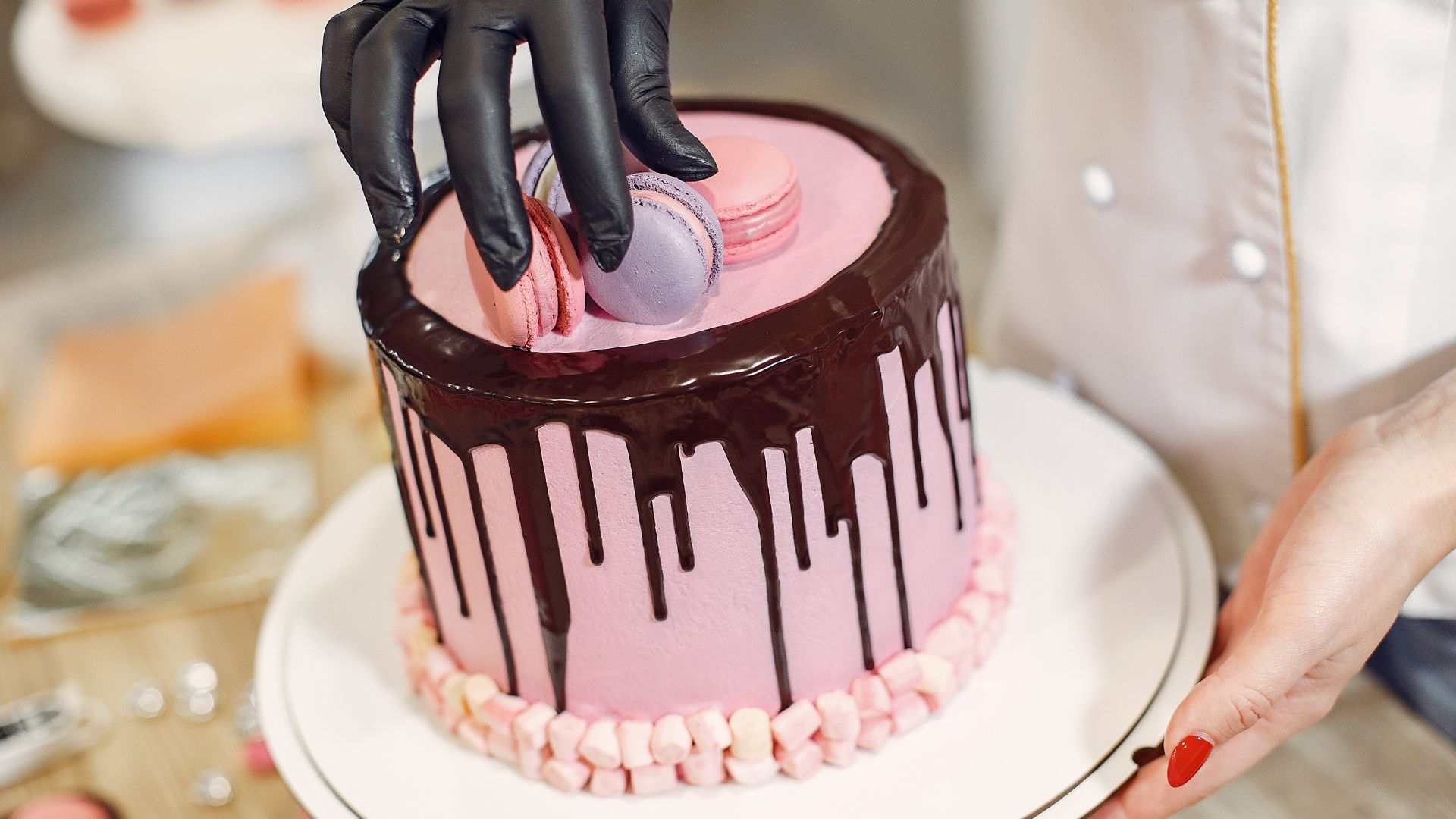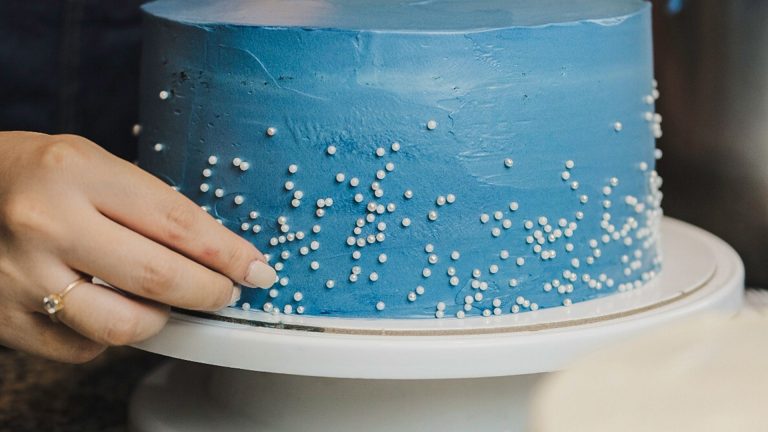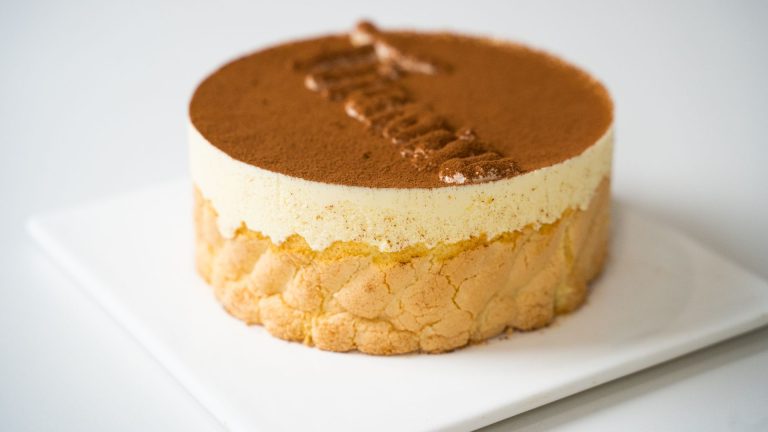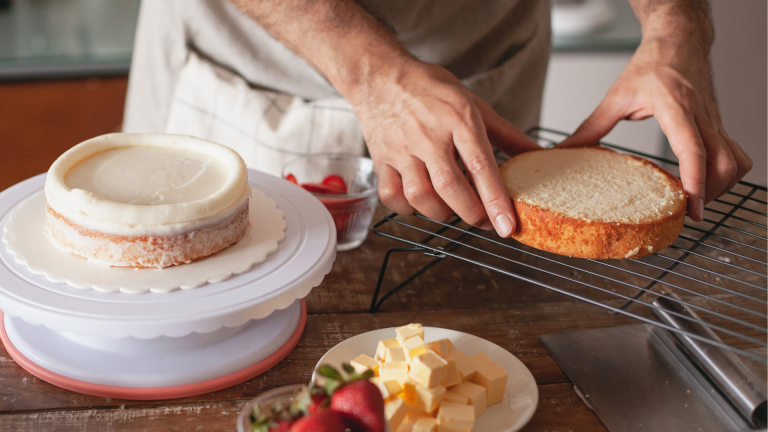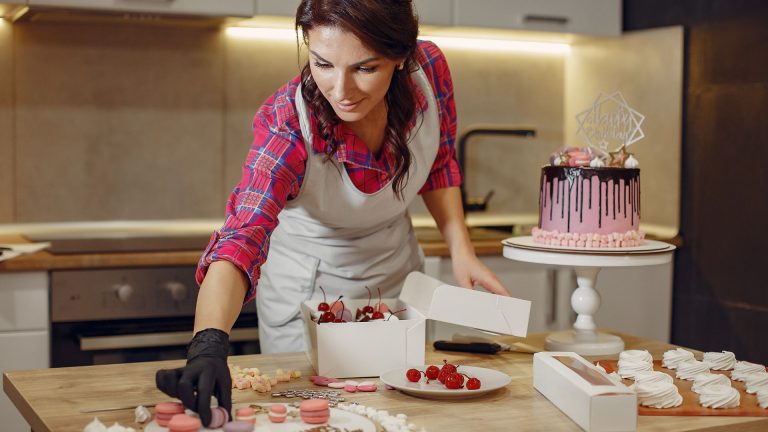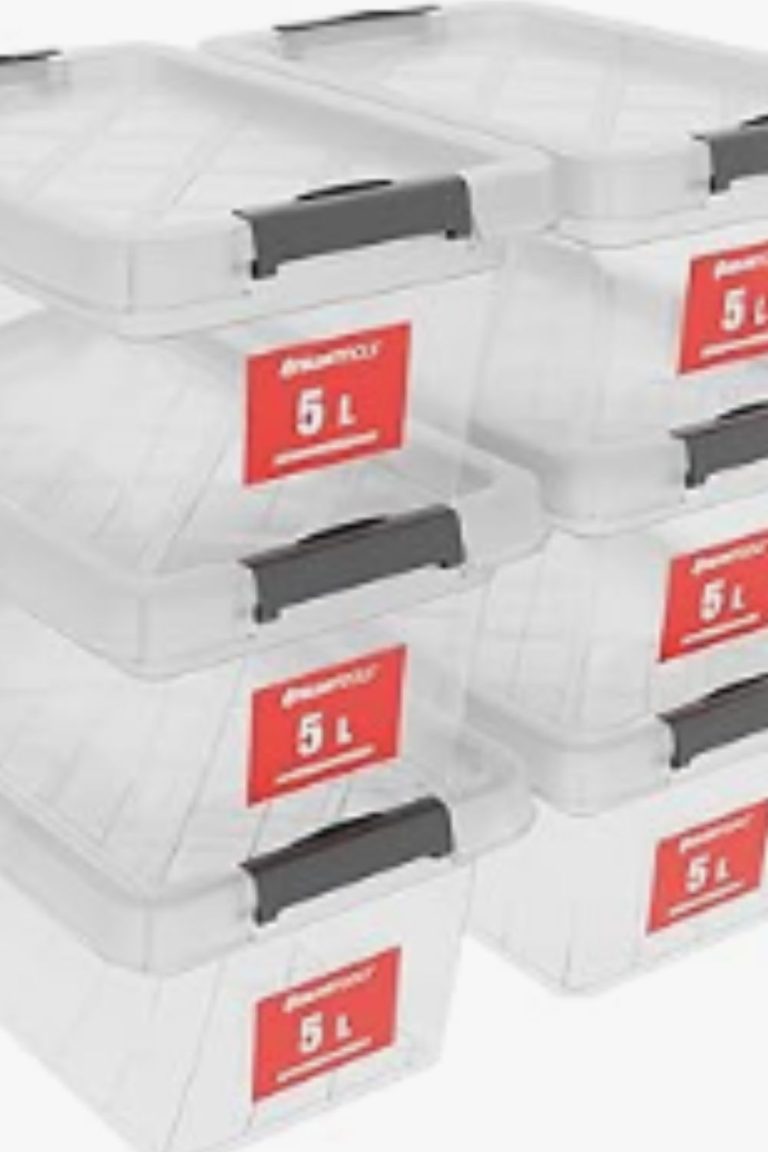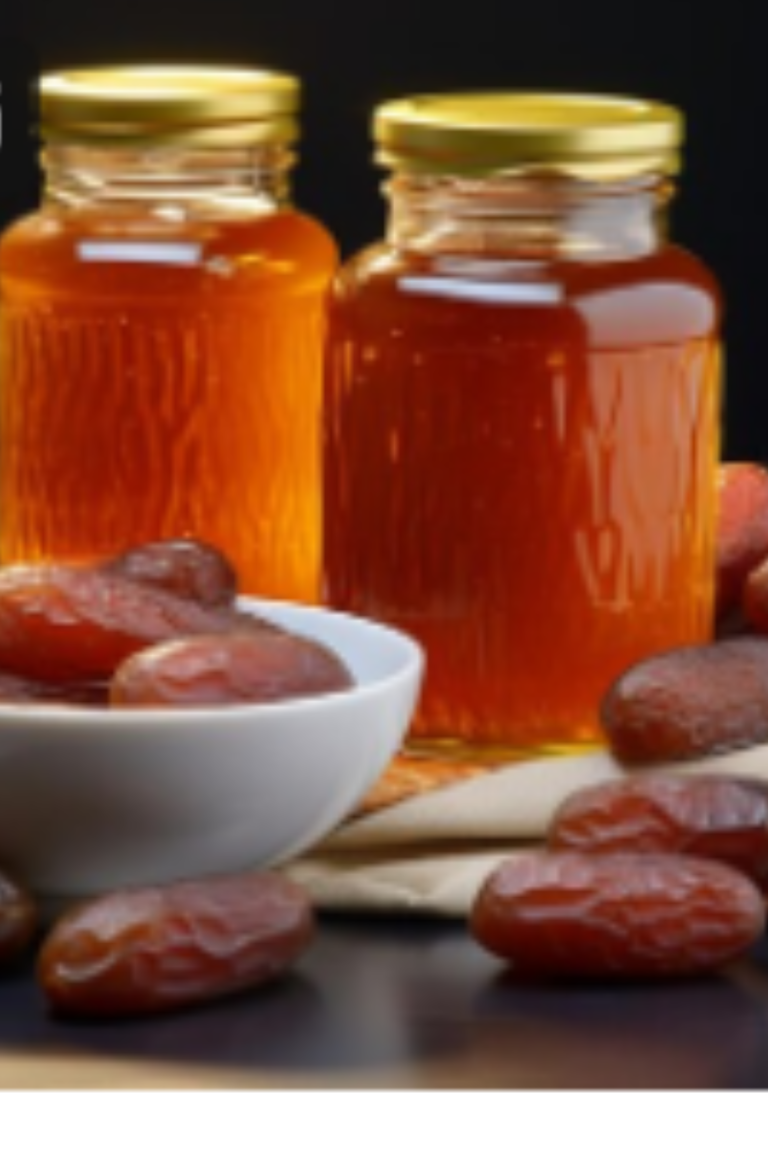FRZ: Freezing role in cake making Explained
In this topic, I’m going to talk about freezing and its role in cake making, drawing from my own personal experience. Freezing cakes might seem like an unusual step, but it can make a world of difference in both texture and flavor. If you’ve ever wondered why or how freezing can be beneficial, keep reading to uncover the secrets behind this handy technique.
Table of Contents
ToggleWhat is Freezing?
Freezing is the process of lowering the temperature of food to below the freezing point, typically to preserve it. When it comes to cakes, this means placing your cake or cake components in the freezer for a period of time. By doing this, you can maintain the freshness of your baked goods, manage your time more efficiently, and even improve the overall quality of your cake..== >> Check out the right cake Freezing tools and ingredients that you need here
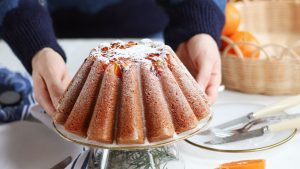
The Benefits of Freezing Cakes
1. Preservation
One of the primary benefits of freezing cakes is preservation. Freezing stops the growth of bacteria and mold, which helps in extending the shelf life of your cake. If you’re making cakes in advance or have leftover slices, freezing is a great way to keep them fresh.
2. Improved Texture
Freezing cakes can actually improve their texture. For example, after freezing and thawing, cakes can become incredibly moist. This happens because the freezing process helps lock in the moisture. When the cake is thawed, it retains more of its original moisture, making every bite deliciously soft.
3. Ease of Decorating
If you’re preparing cakes for a special occasion, freezing them before decorating can make the process much easier. A chilled cake is firmer and less likely to crumble or break while you’re applying frosting or fondant. This makes for smoother and more precise decoration..== >> Check out the right cake Freezing tools and ingredients that you need here
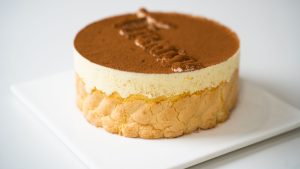
4. Convenience
Freezing cakes is a fantastic time-saver. You can bake and freeze cakes weeks or even months in advance. When the time comes, you just need to thaw and decorate, which is a huge advantage if you’re juggling a busy schedule.
Tips for Freezing Cakes
Wrap Properly
To prevent freezer burn, wrap your cake tightly in plastic wrap. For extra protection, you can also place it in an airtight container or a resealable freezer bag.
Cool Completely
Make sure your cake is completely cooled before freezing. Placing a warm cake in the freezer can cause condensation, which can negatively affect the texture and flavor..== >> Check out the right cake Freezing tools and ingredients that you need here
Label and Date
Labeling and dating your cakes helps you keep track of how long they’ve been in the freezer. Ideally, cakes should be used within three months for the best quality.
Thawing
When you’re ready to enjoy your frozen cake, remove it from the freezer and let it thaw at room temperature. For best results, avoid thawing in the microwave or oven, as this can alter the cake’s texture.
Freezing vs. Refrigerating Cakes: What You Need to Know
When it comes to storing cakes, both freezing and refrigerating are popular options, but each serves a different purpose and has its own set of benefits and drawbacks. If you’re wondering which method is best for your cakes, here’s a comprehensive guide to help you decide between freezing and refrigerating.
Freezing
Freezing involves lowering the temperature of the cake to below 32°F (0°C) to preserve it for an extended period. This method is often used when you want to store cakes for weeks or months.
Benefits of Freezing Cakes:
- Long-Term Storage: Freezing is ideal for cakes you want to keep for a long time. Properly frozen cakes can last up to three months or even longer without losing quality.
- Moisture Retention: Freezing helps lock in moisture. When done right, frozen cakes can remain moist and delicious once thawed.
- Convenience: You can prepare cakes well in advance. This is particularly useful for busy schedules or for special occasions..== >> Check out the right cake Freezing tools and ingredients that you need here
Drawbacks of Freezing Cakes:
- Preparation Required: Cakes need to be properly wrapped to avoid freezer burn and off-flavors.
- Thawing Time: Frozen cakes require time to thaw, which means you need to plan ahead.
Refrigerating
Refrigerating involves storing cakes at a temperature between 35°F and 40°F (1.6°C to 4.4°C). This method is more suitable for short-term storage, usually for a few days to a week.
Benefits of Refrigerating Cakes:
- Short-Term Freshness: Refrigeration keeps cakes fresh for a shorter period. This is useful if you plan to consume the cake within a week.
- Convenience: No need to thaw. Cakes can be served straight from the fridge.
- Easy Access: Refrigerated cakes are ready to eat without any additional preparation.
Drawbacks of Refrigerating Cakes:
- Drying Out: Refrigeration can sometimes dry out cakes, especially if they are not properly covered. The cold air can pull moisture from the cake, affecting its texture.
- Limited Storage Time: Cakes stored in the refrigerator should ideally be consumed within a week to ensure they remain fresh.
When to Freeze vs. Refrigerate
Freeze When:
- You’re preparing cakes well in advance.
- You have leftover cake that you want to save for a later date.
- You’re planning to make a cake for a special occasion and want to get ahead of the game.
Refrigerate When:
- The cake is to be consumed within a few days.
- You need to store a decorated cake that you plan to serve soon.
- You have a cake with perishable fillings or frostings, such as cream cheese or whipped cream, which need to be kept cool.
Tips for Best Results
For Freezing:
- Wrap Tightly: Use plastic wrap and aluminum foil or place the cake in an airtight container.
- Cool Before Freezing: Ensure the cake is completely cooled to avoid condensation.
- Label Clearly: Write the date on the packaging to keep track of how long the cake has been in the freezer..== >> Check out the right cake Freezing tools and ingredients that you need here
For Refrigerating:
- Cover Well: Use plastic wrap or a cake dome to prevent the cake from drying out or absorbing other odors from the fridge.
- Avoid Refrigerating Too Long: Keep an eye on the freshness, and try to enjoy the cake within a week..== >> Check out the right cake Freezing tools and ingredients that you need here
comparison tabular on this topic the key note and considrations
Comparison of Freezing vs. Refrigerating Cakes
| Aspect | Freezing | Refrigerating |
|---|---|---|
| Temperature | Below 32°F (0°C) | Between 35°F and 40°F (1.6°C to 4.4°C) |
| Storage Duration | Up to 3 months or more | Up to 1 week |
| Moisture Retention | Retains moisture well if wrapped properly | Can dry out if not covered properly |
| Texture After Storage | Can remain moist and tender after thawing | May become slightly dry or hard |
| Preparation | Requires proper wrapping (plastic wrap + foil/airtight container) | Minimal preparation; simply cover with plastic wrap or a cake dome |
| Thawing Time | Requires time to thaw (several hours or overnight) | No thawing needed; cake is ready to eat directly from the fridge |
| Convenience | Convenient for long-term storage and advance preparation | Convenient for short-term storage and immediate use |
| Ideal Use | Baking ahead for future use, special occasions | Short-term storage, decorated cakes to be consumed soon |
| Impact on Flavor | Maintains flavor if wrapped correctly | Flavor can be slightly affected by other fridge odors |
| Effect on Decorations | Can preserve decorated cakes well if properly wrapped | Decorations may become less fresh or slightly affected |
Key Notes and Considerations
Freezing Cakes:
- Best for Long-Term Storage: If you’re planning to store a cake for more than a week, freezing is the way to go.
- Proper Wrapping is Crucial: Ensure the cake is tightly wrapped in plastic wrap and foil or placed in an airtight container to prevent freezer burn and off-flavors.
- Thawing Time: Plan ahead for thawing; it usually takes several hours to overnight depending on the size of the cake.
- Moisture Preservation: Freezing helps retain moisture, resulting in a moist cake once thawed, provided it’s wrapped well.
- Convenience: Great for making cakes ahead of time, which can be a real time-saver for busy schedules.
Refrigerating Cakes:
- Best for Short-Term Storage: Ideal for cakes that will be consumed within a week.
- Avoid Drying Out: Cover the cake well to prevent it from drying out or absorbing other odors in the refrigerator.
- No Thawing Needed: Refrigerated cakes can be enjoyed straight from the fridge, making it a convenient option for cakes that need to be eaten soon.
- Texture Changes: Refrigeration can sometimes affect the texture, making it slightly drier or harder over time.
- Decorations: If the cake is decorated, it’s often better to refrigerate it to keep the decorations fresh until serving.
.== >> Check out the right cake Freezing tools and ingredients that you need here
FAQs on Freezing vs. Refrigerating Cakes
1. Can I freeze a decorated cake?
Yes, you can freeze a decorated cake. To do so, make sure it’s wrapped securely in plastic wrap and aluminum foil or placed in an airtight container. This helps protect the decorations from freezer burn and maintains their appearance.
2. How long can a cake stay in the freezer before it affects the quality?
A cake can typically be frozen for up to 3 months without a significant loss in quality. Beyond this period, it may still be safe to eat, but the texture and flavor might start to deteriorate.
3. Can I freeze cakes with cream cheese or whipped cream frosting?
Yes, cakes with cream cheese or whipped cream frosting can be frozen. However, these types of frostings may not hold up as well as others after freezing and thawing. Be sure to wrap the cake well and consider freezing it without the frosting if you’re concerned about texture changes.
4. How do I properly thaw a frozen cake?
Remove the cake from the freezer and unwrap it. Let it thaw at room temperature for several hours or overnight. For best results, keep the cake wrapped until it’s fully thawed to prevent condensation from affecting the texture.
5. Can I refrigerate a cake that has already been frozen?
It’s best to refrigerate a cake only after it has been thawed from the freezer. Freezing and then refrigerating can lead to changes in texture and moisture levels.
6. What’s the best way to prevent a refrigerated cake from drying out?
Cover the cake well with plastic wrap or use a cake dome to keep it fresh and moist. This helps prevent it from drying out and absorbing odors from the refrigerator.
7. How do I know if a frozen cake has gone bad?
Signs that a frozen cake may have gone bad include an off smell, significant freezer burn, or changes in texture that make it unpleasant to eat. If the cake looks or smells strange, it’s best to err on the side of caution and discard it.
8. Can I freeze individual cake slices?
Yes, freezing individual cake slices is a great way to enjoy a piece of cake whenever you want without defrosting the whole cake. Wrap each slice in plastic wrap and then in foil, or place it in an airtight container before freezing.
9. Can I refreeze a cake once it’s been thawed?
Refreezing a cake that has been thawed is not recommended as it can negatively impact the texture and quality of the cake. It’s best to only thaw what you plan to use.
Final Words
Freezing and refrigerating cakes are both effective methods of storage, each serving different needs. Freezing is perfect for long-term storage and maintaining moisture, while refrigerating is better suited for short-term needs and immediate access. Understanding the differences between these methods can help you make the best choice based on how long you plan to store your cake and how you want it to taste.
By following proper storage techniques, you can ensure that your cakes remain delicious and enjoyable, whether you’re saving them for a special occasion or simply making sure leftovers stay fresh. So, whether you’re freezing a cake for a later date or refrigerating it for a party tomorrow, these tips will help you get the most out of your baked treats.

Hi!
I’m Mike, the creator of Forum Foodies. In my own personal experience, understanding ingredients is key to great cooking.
Forum Foodies offers guides on various ingredients, from staples to exotic finds. Join our community, share your experiences, and learn from fellow food lovers.
Have questions or suggestions? Email me at info@forumfoodies.com. Let’s embark on this delicious adventure together.
Happy cooking.
Mike/
Related Posts
- FZ: Freezing role in cake making Explained
In this topic, I’m going to talk about the role of freezing in cake making,…
- CRM: Creaming role in cake making Explained
In this topic, I'm going to talk about the creaming method and its role in…
- WHP: Whipping role in cake making Explained
In this topic, I'm going to talk about WHP - Whipping. From my own personal…
- ICG: Icing role in cake making Explained
When it comes to cake making, icing is truly the cherry on top. In this…
- INF: Infusing role in cake making Explained
In this topic, I'm going to talk about the magical process of infusing flavors into…
- SCO: Scooping role in cake making Explained
In the world of cake making, every little detail matters. One technique that might seem…
- MIX: Mixing role in cake making Explained
When it comes to cake making, mixing is an art form that can make or…
- SLC - Slicing role in cake making Explained
When it comes to baking, the art of slicing can make or break the final…
- KNT: Knotting role in cake making Explained
In this topic, I'm going to talk about a fascinating aspect of cake making: KNT,…
- MCH: Machining role in cake making Explained
In this blog, I’m going talk about the MCH - Machining and its impact on…
- BRU: Bruising Role in Cake Making Explained
When it comes to baking, it’s easy to get caught up in the complexities of…
- CUT - Cutting role in cake making Explained
In this topic, I’m going to talk about the often-overlooked but crucial aspect of cake…
- TMP: Tempering Role in Cake Making Explained
In this topic, I’m going to talk about tempering, a technique that’s often overlooked but…
- FOLD: Folding role in cake making Explained
In this blog, I’ll talk about the art of folding and its crucial role in…
- VLC: Vulcanizing role in cake making Explained
In this topic, I’m going to talk about VLC, or vulcanizing, and its role in…

